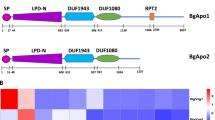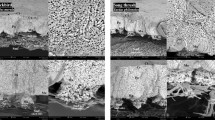Abstract
IN a previous paper (Proc. Camb. Phil. Soc. Biol. Sci., October 1924) on the eggs of the centipede, Lithobius forficatus, one of us (V. N.) described two kinds of yolk, albuminous and fatty. The albuminous yolk is preceded by nucleolar extrusions of a remarkable type, and its origin seems to be associated with them, although no evidence could be adduced that they are directly transformed into the albuminous yolk. It was further shown that the juxta-nuclear Golgi apparatus fragments into small granules and small crescent-shaped Golgi elements. The former grow in size and give rise to the fatty yolk.
This is a preview of subscription content, access via your institution
Access options
Subscribe to this journal
Receive 51 print issues and online access
$199.00 per year
only $3.90 per issue
Buy this article
- Purchase on Springer Link
- Instant access to full article PDF
Prices may be subject to local taxes which are calculated during checkout
Similar content being viewed by others
Author information
Authors and Affiliations
Rights and permissions
About this article
Cite this article
NATH, V., HUSAIN, T. Origin of Yolk in the Eggs of Scolopendra. Nature 118, 660–661 (1926). https://doi.org/10.1038/118660a0
Issue Date:
DOI: https://doi.org/10.1038/118660a0
This article is cited by
-
Experimentelle Untersuchungen �ber die Permeabilit�t der wachsenden Oocyten in Insektenovarien
Zeitschrift f�r Zellforschung und Mikroskopische Anatomie (1931)
-
Untersuchungen über die Cytologie der Sekretbildung in der Mitteldarmdrüse von Astacus Leptodactylus
Zeitschrift für Zellforschung und Mikroskopische Anatomie (1928)
Comments
By submitting a comment you agree to abide by our Terms and Community Guidelines. If you find something abusive or that does not comply with our terms or guidelines please flag it as inappropriate.



